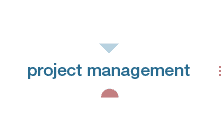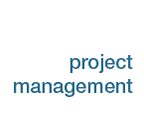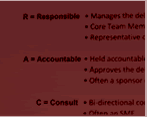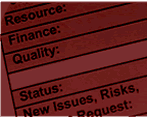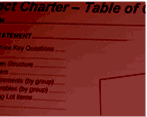
Methodology
 Pinch-Point Solutions utilizes several types of methodology for ensuring a project’s success. These types include the waterfall and iterative processes. Pinch-Point Solutions can tailor a methodology that will work for your organization as well.
Pinch-Point Solutions utilizes several types of methodology for ensuring a project’s success. These types include the waterfall and iterative processes. Pinch-Point Solutions can tailor a methodology that will work for your organization as well.
Proven Leadership:
- Managed the efforts of IT application development and application deployment
- Responsible for the leadership and management of IT technical staff and cross-functional teams
- Managed the creation of numerous Project Management Offices (PMO)
- Managed the daily operations of an enterprise-wide Project Management Office
- Planned and implemented a full system development life cycle in a distributed environment
- Managed global projects
Revenue Generation/Expense Reduction
- Implemented process changes to increase revenue at physicians’ practices by 50%
- Implemented procedural change that increased annual revenue over $5M
- Recommended and executed an IS application change that netted $12M in additional fee revenue per year
- Implemented a global system that produced savings of approximately $3M over a 5 year period
- Reduced initial startup cost for new businesses by over $1M
Process Based Solution
Situation |
Monetary losses were increasing for physician practices. In addition the maximum patient capacity had been reached. The initial assessment by the physician practices was to implement a software package across all practices. However, an initial assessment of the problem identified business processes that were causing the monetary losses, as well as not allowing for increasing patient volume. Monetary losses were attributed to the lack of copayment collections and delays in insurance billing. Maximum patient capacity was attributed to the processing of patients through the office. In some cases, there would be a minimum of nine (9) touches of the patient by the patient staff, including three (3) or four (4) touches by the receptionist or office clerk. |
Challenges |
The initial solution was to implement an enterprise-wide practice management package. However, upon initial review, the identified solution did not address the root causes: flawed processes governing the operation of the practices. The result of the assessment identified the need to change current processes to enable a higher rate of collection of patient copayments, improve the patient satisfaction with the end to end office experience, and increase throughput of patients per office. One of the main challenges was obtaining buy-in from the various physicians associated with each practice. |
Project Management Approach |
The project charter was adjusted to include a total review of the business processes for the various practices. The project included
|
Process Changes |
The process redesign identified changes in the overall patient flow; minimized the handling of patient and patient paperwork (in some cases, patients and their associated paperwork would be touched a total of 9 times throughout the appointment); enhanced role of office personnel to relieve staff nurses from answering phone calls; allowed nurses to focus on medical issues, rather than office issues. |
Outcomes |
Patient throughput increased by 10-20% at each physician practice; monetary losses were greatly reduced in the first year of implementing the process changes; offices were able to increase their cash flow. Collections of copayments were increased over 100%. The timing of insurance billings was reduced from an average of 62 days to 42 days. Total monetary increase for the practices was over 50%. |
In-house software solution
Situation |
A credit card bank was expanding globally. The bank required a securitization application to be available. The bank had a securitization application for US transactions which required changes to handle the Bank of England laws. |
Challenges |
The bank did not have the capacity to make modifications to handle the additional global requirements. There was also a deadline to securitize credit card transactions within 6 months of opening the global bank. |
Project Management Approach |
A project charter was developed to focus the initiative. Resources for the project were hired to address the shortage of internal resources. In this case, the project team consisted of analysts who were bank employees in the US, analysts from the bank in the UK, and a technical staff made up of contractors. A schedule was created to meet the requested deadline. Project requirements were gathered, addressing all banking laws from the Bank of England. Design, construction, and testing of the solution followed. Implementation of the solution came one (1) month prior to the original implementation date. |
Outcomes |
The credit card bank was able to securitize their global credit card transactions on time |



